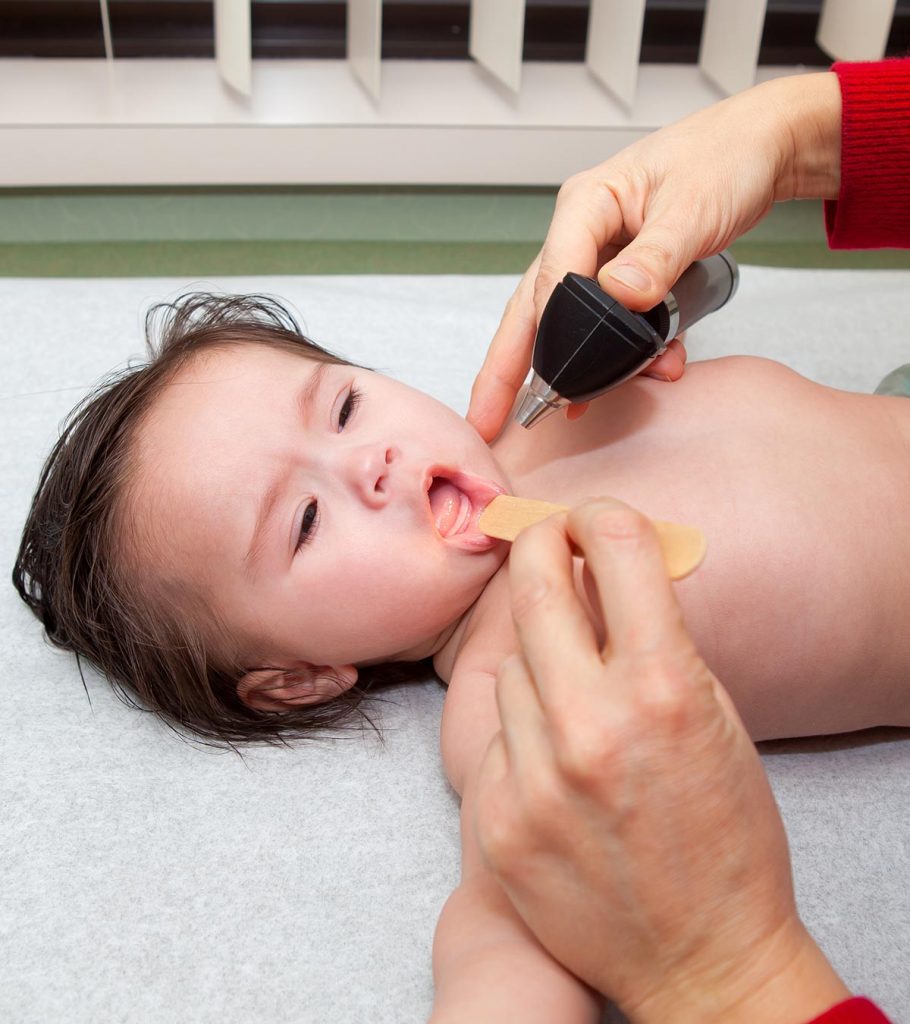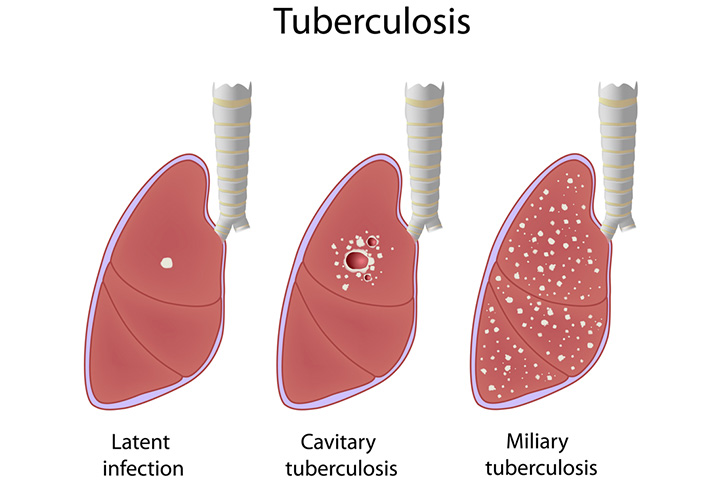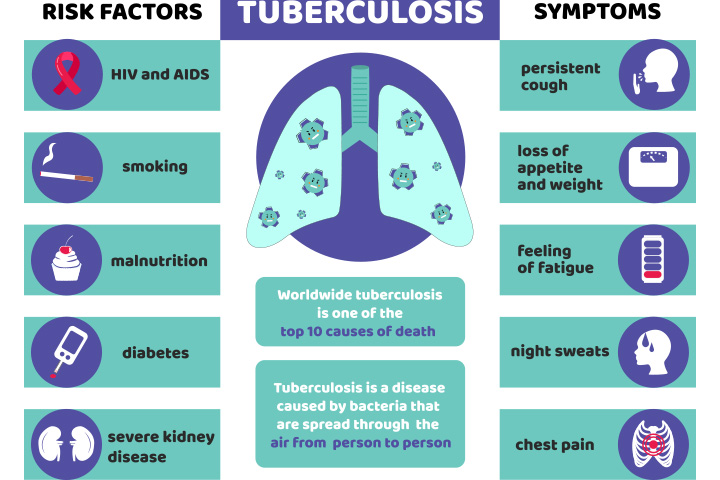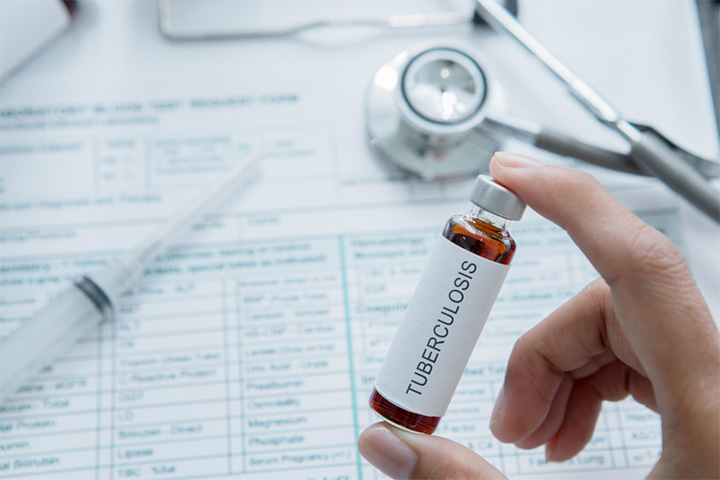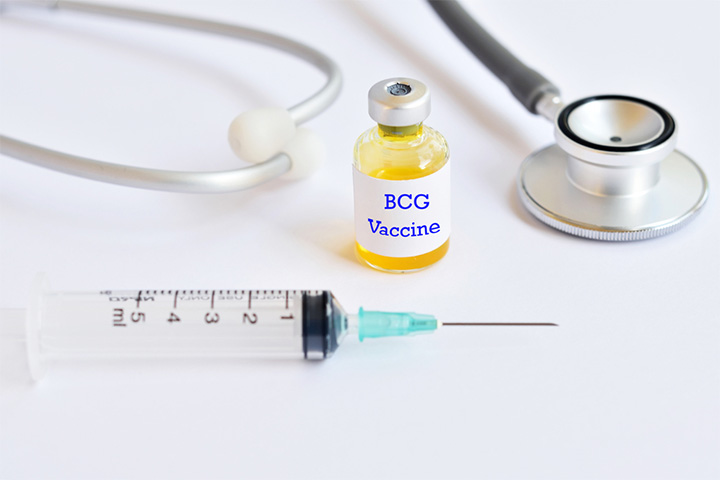Tuberculosis (TB) is a highly infectious airborne disease caused by Mycobacterium tuberculosis (1). Tuberculosis in babies, similar to adults, primarily affects the lungs and is termed pediatric tuberculosis (for all children aged 15 years and below). However, babies and young children are highly prone to acquire life-threatening types of tuberculosis and other respiratory infections.
Read this post to know the various causes and symptoms of TB in infants and how it can be diagnosed, treated, and prevented.
What Are The Causes Of Tuberculosis In Babies?
The primary cause of TB is the inhalation of air contaminated by the Mycobacterium tuberculosis bacteria. An infected person spreads the bacteria in the air by sneezing, coughing, even speaking and singing (2). When an uninfected person inhales the contaminated air, the bacteria settle in the lungs and spread to other parts of the body through the bloodstream.
It is important to know that TB is not spread by the following (2).
- Physical contact like shaking hands
- Sharing food or beverages
- Kissing
- Sharing bed linen, toilet seats, etc.
Tuberculosis infection often spreads to people with whom the person with TB spends more time. This includes family members, friends, and schoolmates. Repeated contact with the patient and the bacteria leads to the development of TB in babies (3).
How Common Is Tuberculosis In Babies?
The incidence of tuberculosis has decreased in developed countries over the last few years.
The graph below shares the age distribution of individuals impacted by TB disease based on the CDC’s data collected between 1993 and 2020. According to the findings, the prevalence of TB across all age groups is declining. As of 2020, TB’s prevalence between children aged 0 and 4 years is 0.9 cases per 100,000 individuals.
Prevalence of tuberculosis in US across age groups (1993-2020)
Source: Reported Tuberculosis in the United States, 2020; CDC
It is estimated that each year there are around a million cases of pediatric TB across the globe (1). The Centres for Disease Control and Prevention (CDC) reported that in 2021, children under 15 represented four percent of TB cases in the US. However, exclusive data on TB prevalence in babies is unavailable. Hence, more research is warranted.
Tuberculosis is the number one infectious cause of death worldwide but remains underappreciated as a cause of morbidity and mortality in children (4). However, diagnosed and treated on time, TB has a good prognosis.
What Are The Types Of Tuberculosis?
It is not always necessary for a baby to develop the tuberculosis disease when they are infected by the TB bacteria. Based on this important feature, the TB infection is classified into the following types (5).
1. Latent TB infection
In this type of infection, the TB bacteria live in your body without making you sick as the immune system inhibits the growth of these bacteria.
The following are the characteristics of a latent TB infection:
- No symptoms of the disease
- No feeling of being ill
- Cannot transmit the infection
- Positive TB skin test and blood test
- May develop TB disease later in the absence of medical intervention if immunity drops
2. TB disease
When the bacteria are active and multiplying in the body, the condition is known as TB disease or active TB. This disease develops when your body’s immunity is not able to stop the growth of latent bacteria anymore.
The following are the characteristics of TB disease:
- Sickness
- Ability to transmit the infection
- Blood and skin tests are positive for TB
It is not necessary for the carriers of latent infection to always develop the disease. Some people exhibit symptoms days after being affected by the bacteria like appetite loss and chills. At times, the bacteria might cause symptoms after years.
Babies and toddlers are more prone to develop severe forms of tuberculosis than older children and adults because their immune systems are not yet fully developed (6).
Symptoms Of Tuberculosis In Babies
Babies with latent tuberculosis infection have no symptoms.
An active TB infection can present symptoms, which are often different for each baby. The commonly seen symptoms are (3) (7):
- Fever
- Loss of appetite
- Sudden weight loss/anemia
- Poor growth of the baby
- Long-lasting cough
- Swollen glands
- Chills and shivering
- Night sweats
- Reduced playfulness
- Lethargy
- Chest pain
- Abdominal pain, diarrhea and luminal tract bleeding in case of intestinal TB
When Should You Call The Doctor?
You should call the doctor if you notice any of the following symptoms in your baby (8).
- Long-lasting cough for more than two weeks (14 days)
- Unexplained long-lasting fever
- Fatigue
- Any suspected contact with an infected patient
- Any travel to countries where TB rates are high
Diagnosis Of Tuberculosis(TB) In Infants
The clinical and radiological features of TB are often different and non-specific in children who are younger than four years of age. In such cases, diagnosing tuberculosis solely on the basis of X-ray findings is difficult and might be inaccurate (6).
The doctor will begin by asking the family history and the child’s symptoms. They may use one or more of the following tests.
- Blood tests: Interferon-gamma release assays (IGRA) is the commonly deployed blood test to confirm tuberculosis infection.
- Skin tests: The test material is injected in the top layer of the skin. If a raised bump is seen in two to three days of the administration, then TB infection can be confirmed.
- Sputum tests: Sputum tests are the best way to isolate the bacteria responsible for tuberculosis. But as babies cannot produce enough sputum, it might be difficult to collect. TB bacteria can be seen under a microscope with special staining or by detecting it’s genetic material.
- Chest X-rays: Chest X-rays are done to check for the typical changes of tuberculosis in the lungs.
- CT scan: CT scan of the thorax might be done to get a better picture of the spread of infection.
- Gastric lavage: Contents from the stomach are extracted to check the presence of the TB bacteria. It might be performed for two to three consecutive days on an empty stomach to diagnose pediatric tuberculosis.
TB in babies is paucibacillary, which means it is caused by a lesser number of bacteria, and it can be difficult to identify in a bacterial culture or under a microscope (6).
The doctor will determine the most suitable diagnostic method for your baby after examining the severity of the symptoms and the general health of the child.
Treatment For TB In Infants
Curing the patient and limiting the spread of the infection in the community are the main goals of tuberculosis treatment.
The doctor might give your baby a combination of the following drugs (6).
- Isoniazid (INH)
- Rifampicin (RIF)
- Pyrazinamide (PZA)
- Rifabutin
- Ethambutol
Isoniazid and rifampicin are usually the first choices of antibiotic therapy drugs.
All these medicines reduce the bacterial load by killing the bacteria, thereby stopping the progression of the disease and its transmission to other people.
The doctors usually prescribe these medicines for six to nine months for the effective eradication of the bacteria. The WHO also recommends the directly observed therapy short-course treatment (DOTS) strategy for the management of TB. It is essential to complete the entire course of medicine to avoid relapse of the disease. The doctor might prescribe medicines for latent infections as well to prevent further health problems such as bacterial meningitis.
How To Prevent Tuberculosis In Babies?
Tuberculosis can be prevented by taking some precautions and preventive measures.
- Avoiding close contact with infected people or people suspected of the infection.
- All members of the family should form a habit of coughing or sneezing in a tissue paper or handkerchief and not in their palms or in the open air.
- Regular screening and testing for TB in regions with a high rate of infection.
Tuberculosis in babies can be prevented in some cases by getting them vaccinated as per the doctor’s recommendation. BCG (Bacilli Calmette-Guerin) vaccine is often used to prevent childhood tuberculosis.
Even though the efficacy of the BCG vaccine is not predictable, yearly estimated figures show it is effective in preventing the severe forms of the disease and other related BCG complications. The BCG vaccine is administered only for the babies who meet set guidelines and only after consulting and getting approval from a tuberculosis specialist doctor (1).
Tuberculosis in babies is a contagious infection that needs to be treated immediately. Although there has been a decline in the number of cases across developed countries in recent years, there are still chances of your baby contracting the disease if they come in contact with an infected person. So staying aware of the symptoms can help you reach out to a doctor in time for appropriate treatment. In addition, since babies’ immune systems are still developing, follow the necessary preventive measures to make sure they don’t contract the infection.
Key Pointers
- Mycobacterium tuberculosis causes tuberculosis (TB), an airborne disease that affects the lungs of both babies and adults.
- Infected individuals spread the TB bacteria through sneezing, coughing, or speaking, and it is primarily transmitted by inhaling contaminated air.
- Due to their underdeveloped immune systems, babies and toddlers are more susceptible to severe forms of TB.
- Symptoms of TB in infants include fever, loss of appetite, coughing, weight loss, and reduced playfulness.
- Diagnosing TB in infants involves evaluating medical history, conducting blood tests, and administering skin tests.
Tuberculosis is a serious infectious disease that affects the lungs. Learn more about its causes, symptoms, and treatments in this video.
